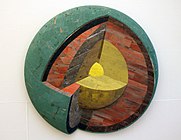
Cornelis Theodorus Maria 'Kees' van Dongen was a Dutch-French painter who was one of the leading Fauves. Van Dongen's early work was influenced by the Hague School and symbolism and it evolved gradually into a rough pointillist style. From 1905 onwards – when he took part at the controversial 1905 Salon d'Automne exhibition – his style became more and more radical in its use of form and colour. The paintings he made in the period of 1905–1910 are considered by some to be his most important works. The themes of his work from that period are predominantly centered around the nightlife; he paints dancers, singers, masquerades and theatre. Van Dongen gained a reputation for his sensuous – at times garish – portraits of especially women.
Van Dongen is a Dutch toponymic surname meaning "from/of Dongen", a town in North Brabant. People with the surname include:

Mark Manders is a Dutch artist. He first studied graphic design; but, then changed his mind and decided to be a writer but with objects instead of words. Therein he became very interested in the paralleled evolution of humans and objects.
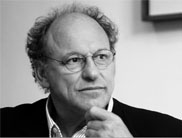
Frits van Dongen is an architect from the Netherlands. He designed a canal-side municipal theatre for the city of Leeuwarden with his firm De Architecten Cie. The building he designed that is known as The Whale is in an area known as the Oostelijke Handelskade that includes "some of The Netherlands' most cutting-edge housing developments including Piraeus, designed by Hans Kollhoff and Christian Rappit, "Hoop, Liefde en Fortuin" by Rudy Uytenhaak" and one of Jamie Oliver's "Fifteen" restaurants. R otterdam Maaskant Prize for Young Architects 2005 winner Oliver Thill and his architecture partner André Kempe, both from East Germany, both worked in van Dongen's office.
Eric Yahnker is a contemporary artist born in 1976 in Torrance, California. His humorous, meticulously rendered graphite and colored pencil drawings and elaborate process pieces examine pop culture and politics. His work is represented by Ambach & Rice in Los Angeles, where he was included in an exhibition with Erwin Wurm and Raymond Pettibon in 2010.
Anneke Eussen is a contemporary artist in fields of drawing, sculpture and photography and installation. Eussen was born in Netherlands 1978 and currently lives and works in Berlin.
Herman Frederik Bieling was a German painter, sculptor, graphic artist and Modem Art propagandist.
Levi van Veluw is a Dutch contemporary artist. He currently lives and works in Amsterdam.

Ewerdt Hilgemann is a German artist, currently living and working in the Netherlands.

Johannes Jacobus (Jan) van der Vaart was an influential Dutch ceramist from the 20th century, known as founder of the abstract-geometric ceramics in the Netherlands.
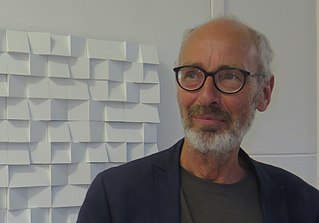
Don Satijn is a Dutch musician and artist, lecturer at the Codarts, who works as sculptor and installation artist.
Bik Van Der Pol. is the artists duo Liesbeth Bik and Jos van der Pol, who work together since 1994 as conceptual artists and installation artists.
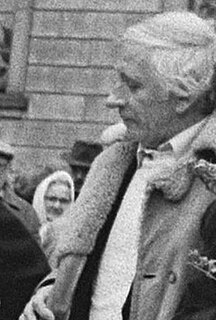
Matheus Josephus Lambertus (Mathieu) Ficheroux was a Dutch artist, who worked as sculptor, glass painter, painter, draftsman, wall painter and installation artist. He is considered among the foremost Dutch artist of the second part of the 20th century.

Helena van der Kraan-Maazel born Helena Jirina Mazl was a Czechoslovakian-born Dutch photographer and partner in the artist duo Axel en Helena van der Kraan.
Axel Erik van der Kraan is a Dutch sculptor, performance artist and graphic artist, also known with Helena van der Kraan as Axel and Helena van der Kraan.
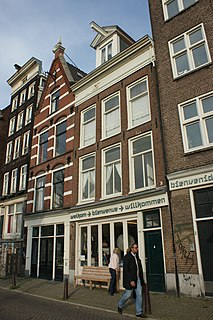
Galerie Wim van Krimpen, also Galerie Van Krimpen is a Dutch former art gallery in Amsterdam and Rotterdam by Wim van Krimpen.
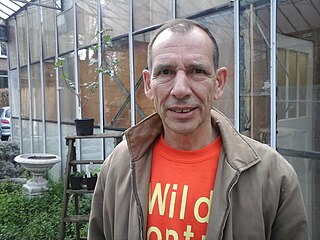
Bernardus Stefanus Henricus (Ben) Zegers is a Dutch visual artist, active as a sculptor and installation artist, and teacher and coordinator at the Gerrit Rietveld Academy.
Thomas Meyer zu Schlochtern is a Dutch art historian and curator, who came into prominence as director of the Arti et Amicitiae and as curator at Rotterdamse Kunststichting in the 1990s.

Harry van Kuyk was a Dutch graphic artist, visual artist, graphic designer and writer. In 1969 he developed a new technique for the graphic arts, the printed relief or "relief print", a print with an extreme relief.

The Nederlandsche Vereeniging voor Ambachts- en Nijverheidskunst (V.A.N.K.) was founded in 1904. It was founded by Jacob Pieter van den Bosch, Herman Hana, Klaas van Leeuwen, Theo Molkenboer, and Willem Penaat. At the turn of the century the idea of artist-craftsmen was emerging. The existing Dutch societies and clubs for painters and architects did not adequately represent these artisans and they formed V.A.N.K., the first society for designers in the Netherlands.






